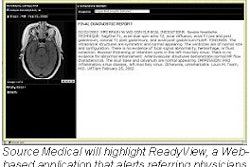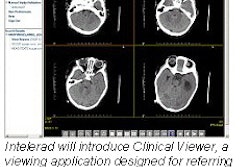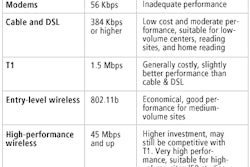As radiology and healthcare move inexorably into the digital domain, the need to standardize imaging terminology becomes critical. And with traditional medical lexicons such as the College of American Pathologists' Systematized Nomenclature of Medicine (SNOMED) falling short in radiology, and imaging-oriented lexicons achieving only sporadic success, the time appears right for a standardized radiology lexicon.
One initiative that may help is RadLex, a pilot project from the RSNA designed to create a consensus of terms used to index and search diverse medical imaging resources. The concept around RadLex arose out of work in the Oak Brook, IL-based society's Medical Image Resource Center (MIRC), when researchers realized the need for a common language to retrieve content across all teaching files in the project.
The RadLex steering subcommittee hopes to lead development of a single language that can be used to describe salient aspects of an imaging examination, including items such as modality, technique, visual features, anatomy, and pathology. Ultimately, the RSNA hopes this lexicon could aid in the organization of diverse sources such as teaching files, clinical trials databases, clinical structured reports, Web-based information resources, image archives, and other radiology information systems.
Instead of creating a brand-new lexicon, RadLex will adopt or link when possible with existing terminology and standards such as the American College of Radiology's BI-RADS breast imaging lexicon, said RadLex steering subcommittee chair Dr. Curtis Langlotz, Ph.D., adjunct associate professor of radiology and epidemiology at the University of Pennsylvania in Philadelphia.
While RadLex has its roots in MIRC, there's no reason it can't also be applied to routine clinical use, Langlotz said. The RSNA plans to make RadLex available for free on its Web site, when completed.
"As we considered it more and more, we recognized that if a common imaging language was available, it would be useable not just for teaching files but for data collection, image reporting, and research," Langlotz said.
To date, the RadLex steering subcommittee has created an initial common framework for organizing information and terms to ensure consistency across imaging modalities. This framework defines what the lexicon would look like, including how the terms would be organized and presented, Langlotz said.
Development of the individual terms would fall to representatives from the various radiology subdisciplines. During a breakfast meeting held at the 2002 RSNA meeting earlier this month in Chicago, the RadLex steering subcommittee chose thoracic imaging as its first pilot subspecialty.
In collaboration with the Fleischner Society and the Society of Thoracic Radiology, a committee has been formed to deliberate and create a consensus group of terms to describe areas within chest imaging, Langlotz said.
The committee will meet in the spring of 2003, with the goal of producing an initial pilot lexicon for use with MIRC by the 2003 RSNA meeting. At that point, RadLex would require additional funding to continue its efforts, Langlotz said.
In the meantime, the RadLex subcommittee aims to work closely with the DICOM committee, to ensure that terms developed for RadLex are in harmony with those already developed for the DICOM standard. The subcommittee also wants to ensure that any terms utilized in RadLex are compatible with DICOM, Langlotz said.
By Erik L. RidleyAuntMinnie.com staff writer
December 27, 2002
Related Reading
One-day BI-RADS course improves feature analysis in breast imaging, October 4, 2002
Speech recognition, structured reporting eyed for efficiency gains, March 16, 2002
Copyright © 2002 AuntMinnie.com



















